New Zealand coastal communities are gearing up to mark 250 years since James Cook and Polynesian navigator Tupaia made their first voyage to New Zealand on the Endeavour.
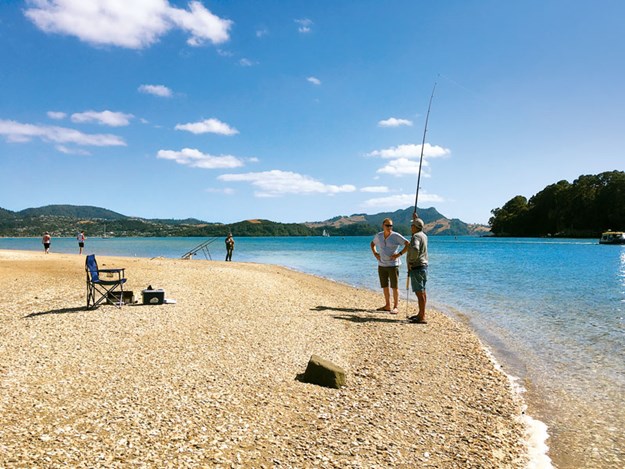 |
Mercury Bay |
Kicking off in Gisborne on 5 October, the commemoration event, Tuia 250, includes months of heritage-inspired, community-run activities including concerts, art exhibitions, food festivals, and history walks and talks. But don’t expect the national event to offer up a one-eyed, monocultural view of New Zealand history.
Instead, count on enjoying a more balanced, respectful telling of the country’s history, says the Ministry for Culture and Heritage. For example, one of the main features of Tuia 250 is a travelling flotilla of the replica Endeavour, waka hourua and va’a tipaerua, or double-hulled canoes.
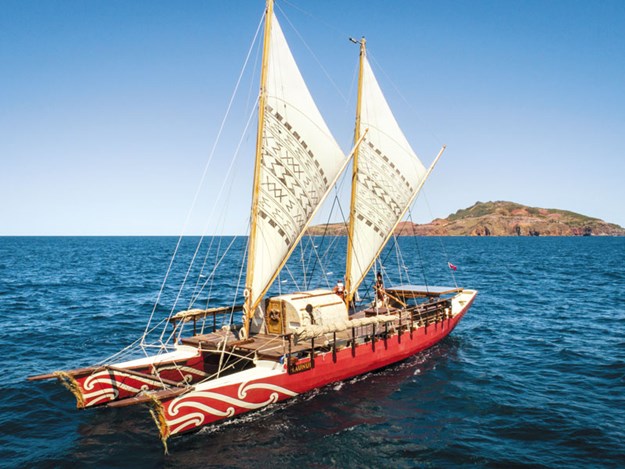 |
Te Toki Waka Hourua’s flagship vessel, Haunui, a replica of a traditional double-hulled voyaging canoe |
The vessels are sailing to 14 regions throughout New Zealand to showcase the country’s mixed European, Māori and Pacific voyaging heritage. There’s a lot planned over late spring/ early summer. Here’s a list of five things to do in the lead up to Christmas.
1. Follow the Flotilla
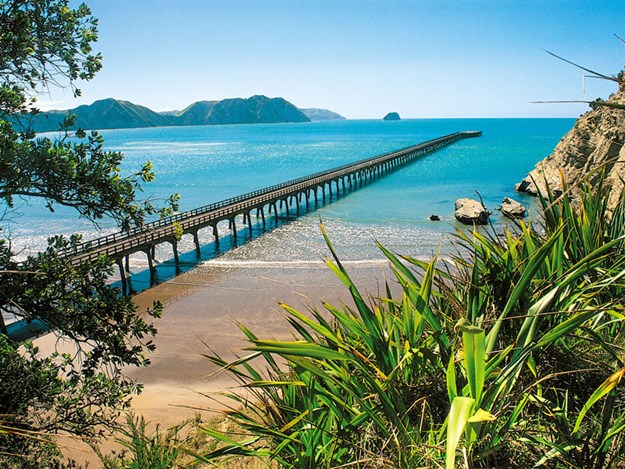 |
Tolaga Bay, Eastland |
Follow the flotilla by making your way to their first port of call — Whangaparaoa — by 28 September. But be sure to head south to Gisborne by 5 October to join the festivities at the flotilla’s second stop and the event’s main opening ceremony. Keep in mind that the flotilla anchors for a few days at each location. You should have plenty of opportunities to see the ships arrive and go aboard and meet the crew once the vessels have anchored.
Between October and early November, the flotilla travels to
Tolaga Bay (12 to 16 October)
Mercury Bay (18 to 21 October)
Maraetai (23 to 24 October)
Auckland (25 to 29 October)
Whangārei (31 October to 4 November) Bay of Islands (November 7 to 11) Doubtless Bay (November 12).
South Island stops throughout November include Picton, Blenheim, Wellington (it’s close to the South Island)
2. Be there for Gisborne’s opening ceremony
It all begins in Tūranga (or Gisborne) on October 5, when the flotilla is due to arrive in Gisborne harbour. Take part in the formal welcome of the voyaging fleet, as well as a festival and community workshops. Walk the new 4km, self-guided heritage walk called Tupapa.
The trail, which comes with an app, starts at the Waikanae Surf Club, continues along the Oneroa walkway to the inner harbour and finishes on the summit of Titirangi hill. It features 10 trail markers to give hikers directions and explain the history of Māori and Pākehā arrival in the region.
Designed to help visitors understand the area’s dual heritage, Tupapa profiles the four iwi of Gisborne, as well as Kupe’s historic journey to Gisborne from Polynesia. It also looks at the bloody encounters with Captain Cook and his crew in 1769.
More information on Gisborne events at teha2019.co.nz
3. Immerse yourself in culture at Wharekaho (Mercury Bay)
The Coromandel’s Mercury Bay is one of four landing sites where Māori and Europeans first met. Ngāti Hei hosts an opening pōwhiri on 18 October at Wharetaewa Marae in Whitianga to commemorate peaceful first contact. If you’ve never experienced a formal pōwhiri or visited a marae, this is your chance to get amongst it.
A 12-hour festival at Taylor’s Mistake called The Tuia Stage, featuring poetry, storytelling, music, dancing and kapa haka, will follow on 19 October. Don’t miss the half-hour Māori instrument performance, say The Tuia Stage organisers. Composed by Te Ahukaramū Charles Royal and performed by the Mercury Bay Community Choir and Waikato’s Orchestra Central, it’ll be a spine-tingling show.
More information on Mercury Bay events at mercury250.org
4. Join a mass haka in Whangarei
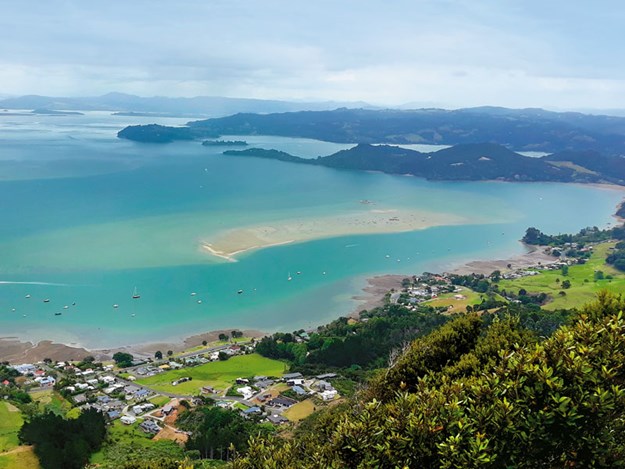 |
Whangārei Heads from Mount Manaia |
In Whangārei, on 2 November, you’ll have the chance to join an energetic mass haka and pōwhiri on the banks of the Hatea River led by the Hihiaua Culture Centre. Spend the entire day in Whangārei to enjoy cultural entertainment, storytelling, markets and a waka display before hitting the road for the Bay of Islands. In the Bay of Islands — or Pēwhairangi in Māori — get up early for the dawn ceremony on 6 November or enjoy a family day at the historic Waitangi Treaty Grounds on 9 November.
More information on Northland events at tuia250kitaitokerau.nz
5. Party in Picton
Finally, jump on the ferry for a party in Picton. Events organised to date include a mass flotilla welcome on Picton Harbour on 22 November, followed by a live music concert by Fly My Pretties the day after.
More information on Marlborough events at totaranui250.co.nz
A timeline of first contact in 1769
Endeavour departs Plymouth on 26 August 1768 carrying 94 people and 18 months of provisions under the command of Lieutenant James Cook. Livestock on board includes pigs, poultry, two greyhounds and a milking goat.
The party reaches Tahiti on 10 April 1769, staying three months to observe and record the transit of Venus across the sun on 3 June. Endeavour departs Tahiti on 13 July. Cook surveys and names the Society Islands and claims Huahine, Raiatea and Borabora as British territories. On 15 August, Endeavour heads to the open ocean for Terra Australis Incognita.
In Tahiti, Polynesian navigator/high priest Tupaia joins the voyage and goes on to play a vital language and cultural translation role in New Zealand. In October 1769, Endeavour reaches New Zealand, becoming the first European vessel to do so since Abel Tasman’s Heemskerck in 1642.
Unfamiliar with such ships, Māori thought the Endeavour was a floating island or a gigantic bird from their mythical homeland of Hawaiki. Cook’s arrival marks the first meetings between Māori and Pākehā. 2019 commemorates the 250th anniversary of these first encounters.
History-inspired roadtrip in Northland
Inspired to learn more about New Zealand’s heritage? Why not take a heritage-themed road trip in Northland, starting at Rangihoua Heritage Park? Rangihoua was a Māori pā, a bustling trading post and New Zealand’s first planned European settlement, where Māori and Europeans lived side by side.
There’s plenty to see (great views and plenty of heritage sites). You can picnic on the foreshore, take a dip in the ocean (if you’re brave — it’s chilly) or enjoy the chance to stretch your legs on the park’s 40-minute heritage walk.
Rangihoua Heritage Park, Northland Rangihoua Heritage Park is one of nine Northland heritage sites within the Landmarks Whenua Tohunga programme, a joint initiative of the Ministry for Culture and Heritage, the Department of Conservation and Heritage New Zealand.
Getting to Rangihoua
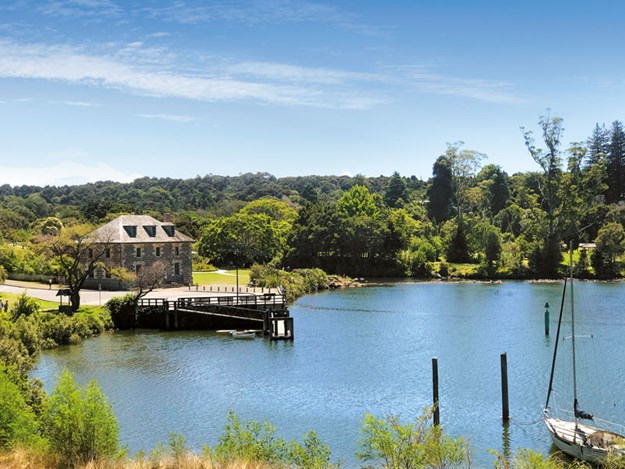 |
Kerikeri Mission Station |
To get to Rangihoua Heritage Park take the 40-minute drive from Kerikeri (or a 90-minute drive from Whangārei). From Hohi Road car park, walk to Rore Kāhu, the park’s central meeting place and enjoy panoramic views of the valley. Take the path down the valley to read plaques with stories of early Māori settlement, early Christianity in New Zealand and Māori and European contact.
Download the Heritage New Zealand driving app
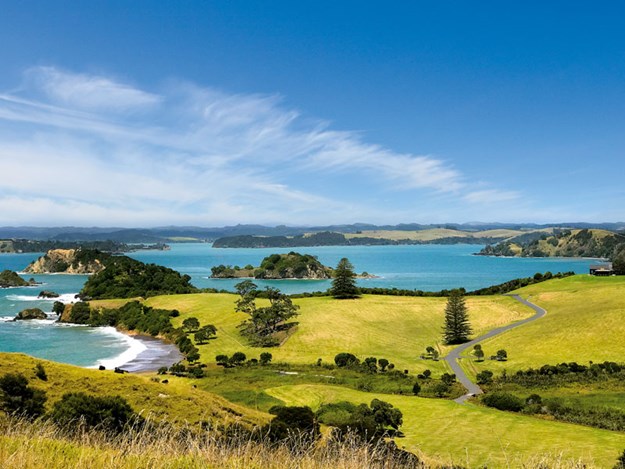 |
Rangihoua Heritage Park |
Tour Northland’s important heritage sites by downloading Heritage New Zealand’s Heritage Trails driving app. Select “On a Mission” from the “Path to Nationhood” tours to begin at Rangihoua Heritage Park.
To take a smartphone audio tour when you’re there, visit: rhp.nz/tour
Did you know?
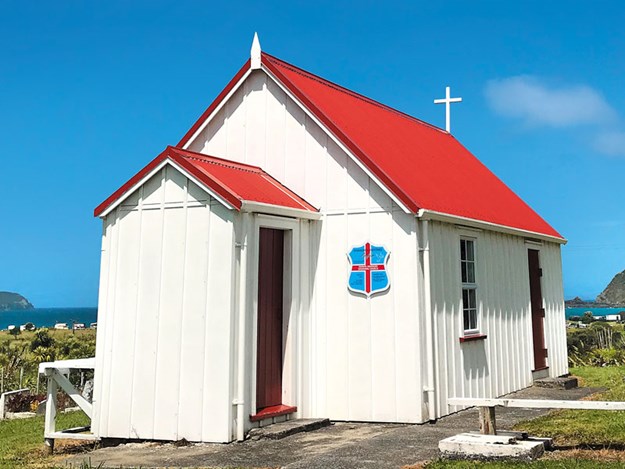 |
Matauri Bay Marsden Church |
- c 1200 | Polynesians cross the Pacific, settling in New Zealand and becoming Māori, tangata whenua, the people of the land.
- 1769 | Lieutenant James Cook arrives in the Bay of Islands on the Endeavour, marking early contact between British and Māori and the beginning of trade relationships.
- 1800s | Te Pahi, a Bay of Islands rangatira (chief), gains a reputation for trade and fairness. In Sydney, Australia, he meets Church of England clergyman, the Reverend Samuel Marsden. Together they plan a Christian mission at Rangihoua.
- 1814 – 1830 | Marsden missionaries arrive at Rangihoua Bay, under the protection of local Māori. New Zealand’s first Christmas Day service is carried out days after the first landing. The missionaries build a community but remain dependent on local Māori for basic food. New Zealand’s first school opens. With starvation and conflict as constant worries, new settlers arriving in New Zealand opt to live inland at mission stations in Kerikeri and Paihia. Finally, in 1830, the Rangihoua mission is closed for good.
- 1914 | The Marsden Cross memorial is erected at Rangihoua to mark New Zealand’s first Christmas Day service in 1814.
- 2012 – 2014 | Archaeological excavations are carried out at Rangihoua before Rangihoua Heritage Park officially opens in 2014 to mark 200 years since the first arrival of missionary settlers in New Zealand. An estimated 5000 people now visit the park each year.





